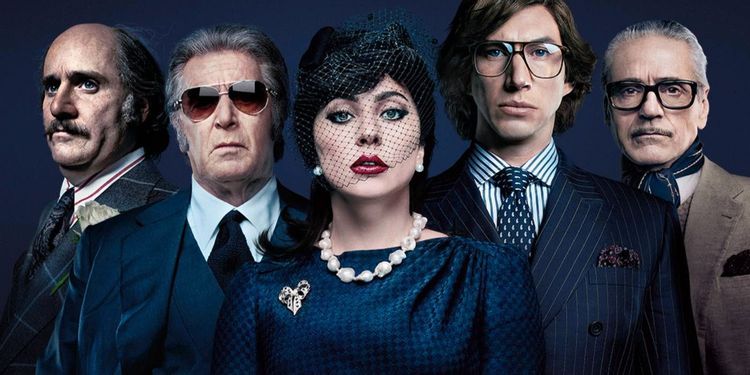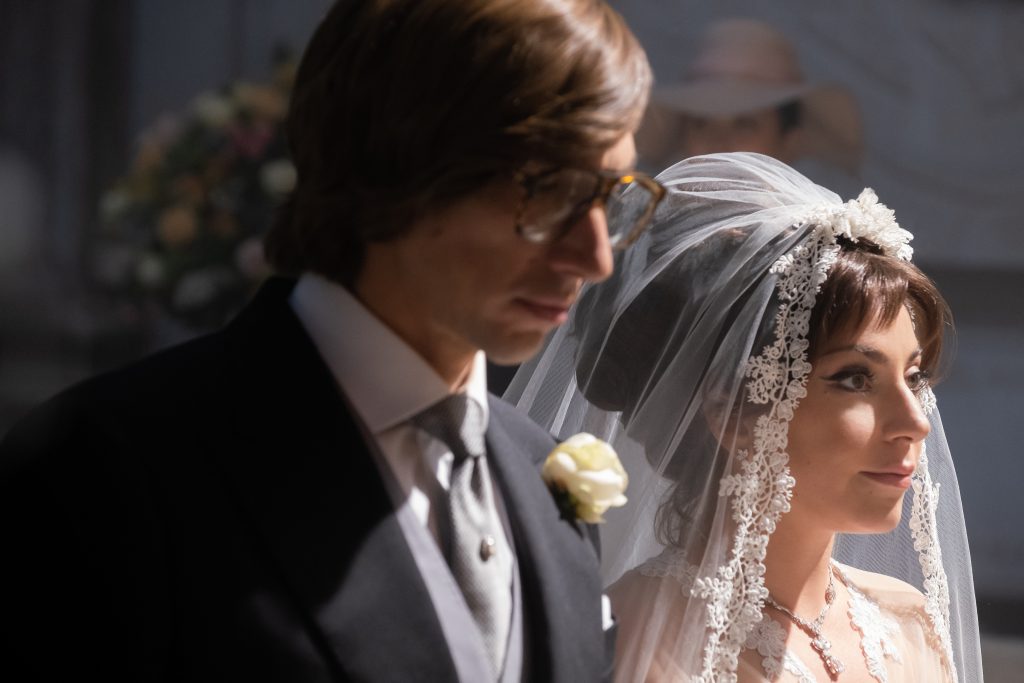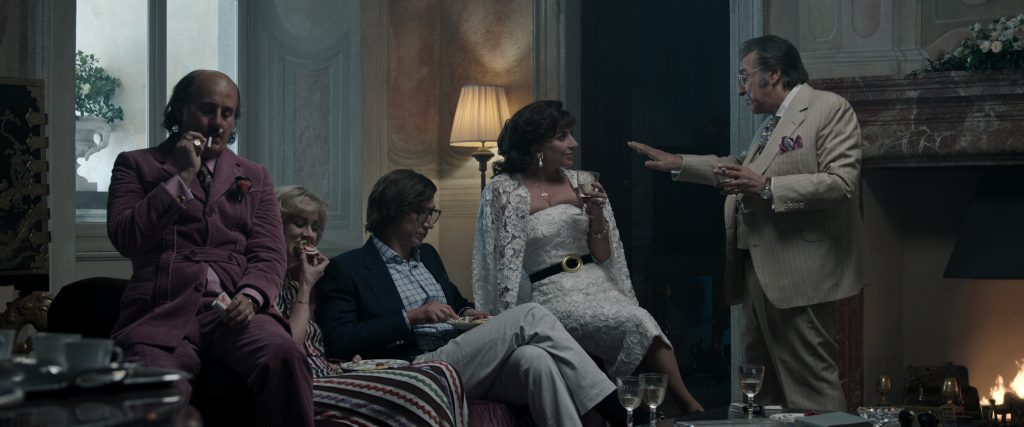
Sir Ridley Scott brings to the silver screen the shocking murder of Maurizio Gucci and his relationship with Patrizia Reggiani, who was renamed by the Italian press “The Black Widow” for ordering the hit on him.
The film is based on Sara Gay Forden’s 2001 book The House of Gucci: A Sensational Story of Murder, Madness, Glamour, and Greed.
If you were expecting a clear-cut reenactment of the true events be prepared for something different, because the film takes a lot of artistic license. In terms of the characters’ backstories, screenwriters Backy Johnston, Roberto Bentivegna, Becky Johnston, and of course Sara Gay Forden, have done a fairly accurate reconstruction.
The narrative covers the entanglements of the Gucci family, when Patrizia Reggiani (Lady Gaga), an outsider from humble beginnings, marries Maurizio Gucci (Adam Driver), and her implacable ambition begins to affect her relationship with her father-in-law Rodolfo Gucci (Jeremy Irons), her uncle-in-law Aldo Gucci (Al Pacino) and her cousin-in-law Paolo Gucci (Jared Leto). The script dutifully makes references to true circumstances, from the first encounter between Patrizia and Maurizio, to Rodolfo Gucci’s past as an actor, from Maurizio’s affair with Paola Franchi (Camille Cottin), to the involvement of Patrizia’s psychic Giuseppina “Pina” Auriemma (Salma Hayek) in hiring Maurizio Gucci’s murderer, and even the moment when Tom Ford (Reeve Carney) became creative director at the Italian fashion house.

HOUSE OF GUCCI A Metro Goldwyn Mayer Pictures film, Photo credit: Fabio Lovino
© 2021 Metro-Goldwyn-Mayer Pictures Inc.
All Rights Reserved.
However the entire mise-en-scène and dialogues go astray. Jokes that should amuse leave high and dry, and situations that should represent the climax of tragedy lead to an involuntary comedic effect. The camp aesthetics used to convey this story could be the grounds for an entertaining black comedy, but there is one major — and fastidious — directorial choice that shatters this fashionable house of cards: having the actors perform with an accent. Lady Gaga’s dialect coach criticised the pop-star’s pronunciation saying she sounded more Russian than Italian. [Personal note: as someone who is from Milan and has a British accent, and therefore has an ear for the intonation of words, I must say Stefani Germanotta did not sound like someone from any region of the Bel Paese].
But the point at issue is the fact that the entire A-list cast was penalised in the performance by having to act with an accent. The film is a Hollywood blockbuster, so if some trait of authenticity was to be found through language it should have been shot entirely in Italian. Doing it in regular English would have been just as effective. But the choice of transforming the characters in flamboyant “ginzo” caricatures is distracting and thrusts ridicule upon the entire drama. This approach does not provide an Italian vibe, but rather a feeling of being in Little Italy.
And the emphasis on the Mafia-like backstabbing and scheming turns House of Gucci into a fashionable version of The Sopranos.
A common mistake in Hollywood is confusing Italians with Italian-Americans, and this is exactly what the film does. Even the music score — that is mostly operatic — enhances this sensation of Godfatherlike grandstand play, where the mob wife “Patrizia Gaga” comes across as a tacky Lady Macbeth with unquenchable attachment to the Gucci name.

A Metro Goldwyn Mayer Pictures film, Photo credit: Courtesy of Metro Goldwyn Mayer Pictures Inc.
© 2021 Metro-Goldwyn-Mayer Pictures Inc. All Rights Reserved.
Additionally, the film basks in postcard depictions of lavish destinations, since it was shot in St. Moritz, Villa Balbiano (the luxurious estate on Lake Como that will soon be available to book on Airbnb), Rome and Milan. The use of these locations is another aspect of how Ridley Scott deviates from facts for artistic purposes. For instance, the circumstances of Maurizio Gucci’s murder occurred in Milan’s Via Palestro, whereas in the film it is set in Rome’s Coppedè neighbourhood. Visually speaking, the area is quaint for the fantastical mishmash of Ancient Greek, Roman Baroque, Mannerist, Medieval and Art Nouveau. But this is not where the assassination occurred. Furthermore, the interior shots of Gucci’s home were done in one of Milan’s House Museums: Villa Necchi Campiglio. This place belonged to a family of Lombard industrialists who owned a cast-iron manufacturing company in Pavia in the 1930s (and their story would make an entirely different film). The mansion was also used for Luca Guadagnino’s 2009 I Am Love. However Villa Necchi Campiglio never belonged to the Guccis, but undoubtably it makes a great film location.
The only one who has managed to truly instil a sense of Gucci in this film is Janty Yates, the costume designer who won an Academy Award in 2001 with another Ridley Scott colossal set in Italy: The Gladiator. The selection of dresses is remarkable and spot on. There are some subtle fashion homages, when there are glimpses of Gucci’s iconic Flora scarf that Rodolfo Gucci designed for Grace Kelly, and the Italian brand’s loafers with the representative green and red band.
By and large there is attention to certain details, but the spaghetti with meatballs representation of this Northern Italian family makes House of Gucci a badly tailored piece.
Final Grade: C-

